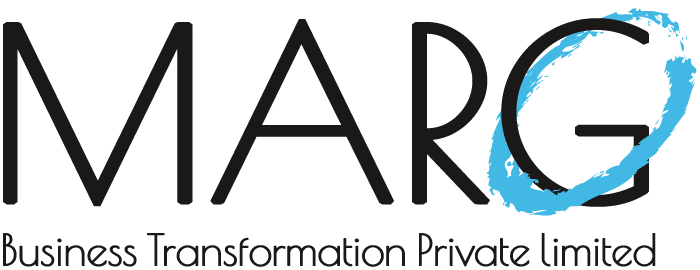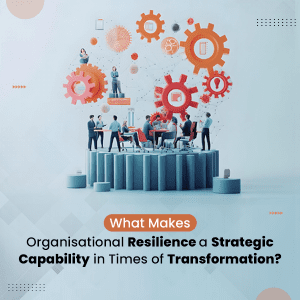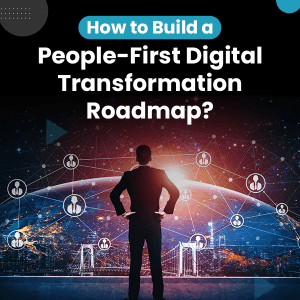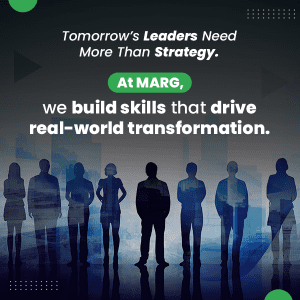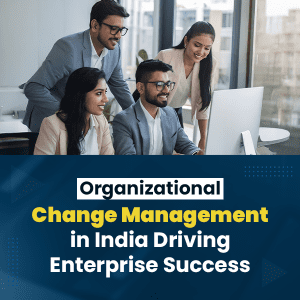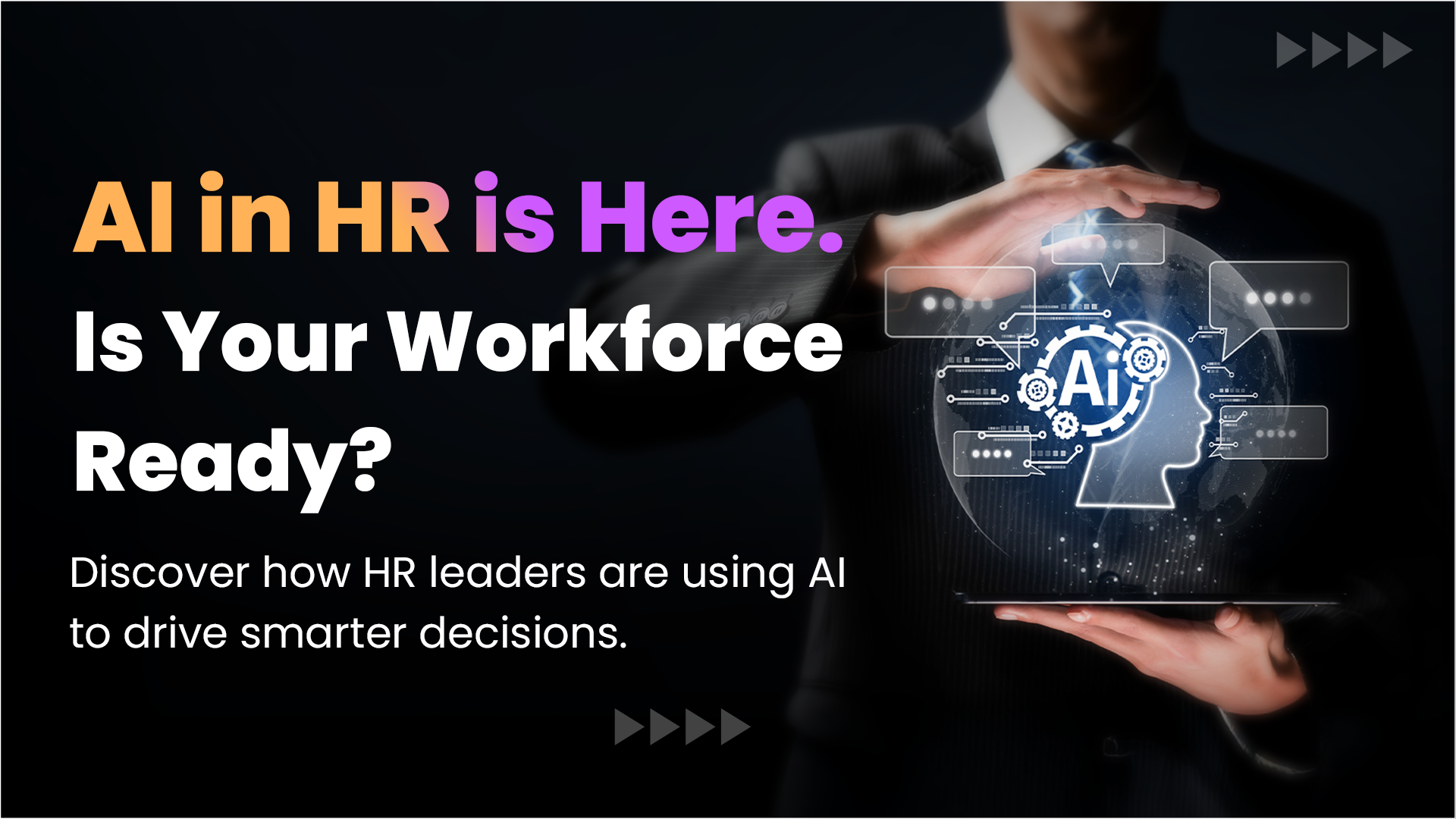
Just a decade ago, the idea of robots in HR felt like science fiction. Today, AI is no longer a futuristic concept—it’s a force reshaping the workplace, driving sharper decisions, deeper engagement, and leaner operations.
But AI adoption in HR isn’t just about automation or analytics. It’s about reimagining human potential and transforming HR from a support function into a strategic driver.
At MARG, we believe that real transformation lies at the intersection of technology and trust. And for HR leaders, that means learning how to deploy AI in a way that builds alignment, empowers people, and prepares the workforce for the future.
Let’s decode how organizations can leverage AI in HR not just for efficiency, but for meaningful, lasting change.
Why AI in HR Management Matters Now More Than Ever
AI is no longer a “nice to have” in the HR toolkit. It’s fast becoming a strategic imperative.
From automating repetitive tasks to enriching employee journeys, AI in HR management is driving measurable impact in five core areas:
- Talent acquisition
- Employee engagement
- Learning and development
- Operational efficiency
- Change readiness
When implemented with intent, AI adoption becomes a catalyst—not just for saving time, but for shaping a more resilient, future-ready workforce.
AI in HR: Tools That Drive Transformation
Let’s break down some of the most impactful AI solutions HR leaders are using today:
1. Generative AI for Communication and Content
AI-powered assistants like Kaiya™ are helping HR teams design change communication strategies, create onboarding plans, and build change blueprints faster than ever.
Impact: HR leaders can now integrate AI in change management to align systems, people, and processes in real-time—especially during digital transformation initiatives.
Use case: Communication templates, resistance management plans, and reinforcement strategies—all tailored to the change initiative at hand.
2. Predictive Analytics for Proactive People Strategy
Why react when you can anticipate?
AI in HR allows you to predict:
- Turnover risk based on engagement or performance dips
- Skill gaps that could impact future projects
- Hiring needs for growing business lines
With AI-powered dashboards, HR teams can base workforce planning on real-time insights, not gut feel.
Strategic shift: From firefighting to forecasting.
3. Machine Learning for Smarter Recruitment
Talent is your biggest competitive advantage. But filtering hundreds of resumes? That’s not where your HR team adds value.
AI in HR management now uses machine learning to:
- Match applicants with open roles based on fit and potential
- Flag high-performing candidates faster
- Eliminate unconscious bias in screening
The result? A more efficient and inclusive hiring process. And tools like Kaiya extend this by helping HR structure onboarding through a change management lens—ensuring new hires are set up for success from day one.
The Human Side of AI: Engagement, Culture, and Change
Let’s get one thing straight: AI is a tool. People are the purpose.
That’s why AI in change management is a critical focus area. It’s not enough to plug in a new tool and hope for the best. You need structured support to ensure your people adopt and embrace AI.
1. AI-Driven Engagement: Feedback in Real Time
Employee satisfaction surveys are no longer annual rituals. AI now enables real-time sentiment analysis and engagement tracking. With AI in HR, you can:
- Identify disengaged teams early
- Customize interventions based on feedback patterns
- Tailor recognition and development efforts to individual needs
And with Kaiya, you can craft awareness and communication strategies that align with engagement objectives—driving not just participation, but shared ownership.
2. Personalized Learning, Powered by AI
One-size-fits-all training is out. Adaptive learning is in.
AI-powered platforms analyze performance data to deliver personalized development journeys, helping employees build future-ready skills.
Add Kaiya to the mix, and you get:
- Structured learning rollouts
- Communication templates for new tech or process adoption
- Reinforcement strategies to ensure learning sticks
When AI in HR management is tied to structured change support, your L&D programs become a strategic growth lever—not just a checkbox.
3. Automating Admin to Unlock Strategic Focus
HR professionals still spend over half their time on admin tasks. That’s a missed opportunity.
Here’s where AI shines—automating:
- Payroll processing
- Leave management
- Compliance reminders
- Data entry and recordkeeping
The benefit isn’t just efficiency. It’s focus. With AI handling routine tasks, HR teams can focus on culture, capability, and change.
And with AI in change management, tools like Kaiya can guide your rollout of these systems—so adoption is smooth, and impact is immediate.
Making AI Stick: Why Change Management is Non-Negotiable
AI adoption is a change initiative. Treating it like a tech upgrade alone is a mistake.
Here’s how change management ensures success:
1. Change Readiness
AI works best when teams understand the “why.” Change management frameworks build awareness, generate desire, and build early momentum.
2. Resistance Management
Fears of job loss or tech complexity are real. Structured change strategies help address concerns, creating space for two-way conversations.
3. Ongoing Training & Support
Adoption isn’t a one-time event. Change tools like Kaiya help design tailored, ADKAR®-based programs that build confidence and long-term proficiency.
4. Aligning AI with Business Goals
AI must serve your strategy—not distract from it. Change management helps tie each implementation to business outcomes and values.
5. Driving Continuous Improvement
With feedback loops embedded, change management turns AI into a journey—not a destination. It ensures every upgrade becomes a step forward, not a disruption.
Final Thoughts: People-Powered AI Is the Future of the Workplace
AI won’t replace HR. But HR leaders who embrace AI will replace those who don’t.
By aligning AI in HR with clear change management practices, organizations can drive not just automation—but adoption. Not just efficiency—but empowerment.
The real opportunity lies in building a workplace where people and AI don’t compete—but collaborate.
At MARG, we help HR leaders build this bridge—equipping them with the tools, mindsets, and frameworks to co-create a more human, high-performing, and AI-integrated future.
